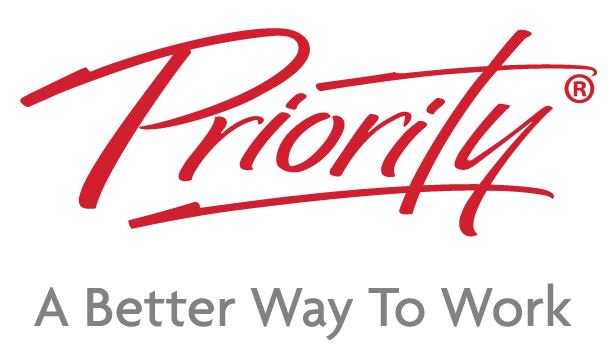Life is full of lessons—the real challenge is learning from them, which isn’t always as easy as it sounds. Sometimes we repeat the same mistakes or miss valuable insights from an experience altogether. The good news is that there’s actually a simple, structured way to break these moments down and turn them into meaningful growth. It’s called the Gibbs Reflective Cycle.
Developed by Graham Gibbs in 1988, this structured model breaks experiences into six easy-to-follow stages, guiding you to think deeper about what worked, what didn’t, and how you can grow. It’s widely used in clinical settings, leadership, and teaching and learning methods, but can be applied by anyone for personal and professional growth. The reflective process offers a clear path to turn everyday situations into valuable lessons.
The 6 Stages of the Gibbs Reflective Cycle
The strength of the Gibbs Reflective Cycle lies in its simplicity and guidance, helping you or your team process an experience from start to finish. The structured framework involves six stages for critical analysis.
Here’s how it works:
Description (what happened?)
The first step is to lay out the facts in an objective way. What actually happened? Don’t overthink or analyse here—just focus on the who, what, when, and where of the situation, including any negative aspects. Moving the facts from your brain to the paper frees up cognitive bandwidth for later analysis.

Feelings (what were you thinking and feeling?)
The feelings stage is when emotions can become part of the reflection process. Consider what you were thinking and feeling at the time. Were you confident, uncertain, stressed, or excited? Feel empowered to be honest during this stage and include both negative and positive emotions. Reflective writing can offer clues on what emotional triggers were involved and encourage more self-awareness about the situation.
Evaluation (what was good and bad about the experience?)
The evaluation stage is where you weigh up the good and the bad. What went well, and what didn’t? Our brains often jump straight to negative aspects, so actively highlighting some positives works to keep this analysis fair and balanced without failing to take accountability for things that fell short. This evaluation will act as a foundation for later action.
Analysis (what sense can you make of the situation?)
Now dig a little deeper with critical thinking. The analysis stage is where you ask questions like why things happened the way they did and consider what influenced the outcome. This is a great time to connect your real-world experience to any theoretical knowledge, models, or training you’ve learned. It helps you see whether your actions match best practices or where there is room for improvement.
Conclusion (what else could you have done?)
With all the facts and feelings on the table, ask yourself what you’ve learned from the experience and whether you could have handled any parts differently or more effectively. This stage helps you crystallise your key takeaways and turns reflections into growth.
Action Plan (if it arose again, what would you do?)
Reflection is only beneficial if you turn what you’ve learned into real-world use. This final stage is all about planning your response if you face a similar situation again. What would you do differently next time—and what can you do to prepare?
Upon completion of this stage, you should have a more comprehensive understanding of why you respond the way you do in certain situations and how you improve your communication skills and continuous learning process.
Sharing this actionable plan with your manager or mentor can help hold you accountable and allow you to draw on their guidance when needed.
Example of the Gibbs Reflective Cycle in Action
From a student reflecting after an exam period to a doctor needing to evaluate recent clinical experiences, the Gibbs Reflective Cycle has many useful applications.
Here’s an example of how someone with clinical practice experience may use it for structured reflection.
In this case, a nurse in a professional practice has had a challenging interaction with a patient’s family during a hospital shift. Using the six stages, they can evaluate how they balanced ethical guidelines with practical training and guide future decision making.
- Description stage: A family member became upset when I couldn’t immediately provide an update on their loved one’s test results.
- Feelings: I felt frustrated and under pressure, but also empathetic, knowing the family was worried.
- Evaluation: I stayed calm, but I realised my explanation lacked reassurance, which may have added to their stress.
- Analysis: Using my critical thinking skills, I could see that my focus was on procedure rather than compassion, which might not have met the family’s emotional needs.
- Conclusion stage: Upon critical reflection, I could have used more empathetic language and offered to follow up proactively once I had the information.
- Action Plan: For future practice, I’ll develop my communication strategies by acknowledging the family’s emotions first, developing understanding, and clearly communicating when they can expect updates on patient safety. With this professional knowledge, I’ll ensure I provide them with updates as promptly as possible.
 The Gibbs model helps turn everyday professional and personal reflection into meaningful learning opportunities and clinical skills. Instead of just moving through the motions, you’re growing forward.
The Gibbs model helps turn everyday professional and personal reflection into meaningful learning opportunities and clinical skills. Instead of just moving through the motions, you’re growing forward.
Benefits of Using the Gibbs Reflective Cycle
The beauty of the Gibbs Reflective Cycle is that it gives structure to what can often feel like a messy or emotional process. You’ve probably tried—consciously or not—to unpack emotional experiences before, only to find the process confusing and overwhelming. As a result, you’ve let experiences slip by unexamined. But now the cycle encourages you to slow down, reflect, and break situations into clear, manageable steps.
While this is the ultimate benefit of the Gibbs Reflective Cycle, the helpful tool also:
- Improves your professional, personal and operational skills
- Sharpens self-awareness through self-reflection
- Develops emotional intelligence and strengthens emotional resilience
- Enhances professional judgement
- Encourages lifelong learning and self-improvement
Ultimately, using the cycle can help you develop more thoughtful responses and handle challenges with more confidence while providing continuous professional development.
Limitations and Criticisms
While the Gibbs model is a fantastic tool for structuring your thoughts, it isn’t without its drawbacks. Some people find the step-by-step format a little too rigid, especially when dealing with complex or nuanced experiences that may not fit neatly into each stage. Moreover, if you rely too heavily on the structure, your reflections may start to feel more like a box-ticking exercise rather than thoughtful, genuine self-exploration.
Comparison with Other Reflective Models
The Gibbs Cycle isn’t the only model to integrate reflective practice. For those who find Gibbs too formulaic, Kolb’s Experiential Learning Cycle is another popular choice that encourages reflection. Kolb’s process is commonly used in education and places more emphasis on learning through direct experience and a continuous loop of doing, observing, thinking, and planning.
Choosing between these models comes down to personal preference and the depth of reflection required.
Gibbs Reflective Cycle for Personal and Professional Development
Life is about personal growth and improvement. As the famous motivational quote goes, “The only person you should try to be better than is the person you were yesterday.”
By working through both emotional responses and practical outcomes, you turn every experience into a learning opportunity. Applying this cycle in real-world scenarios helps bridge the gap between theory and practice. The best thing about it is that you can apply it to refine workplace skills or improve personal development. The more you reflect, the more intentional and adaptable you become to develop strategies for handling any situation and ultimately, the better person you become.
Tips for Writing a Reflection Using Gibbs
One of the most common mistakes we see in people practising the Gibbs Reflective Cycle is failing to stick to the six stages. It’s important to follow each one clearly to guide your thinking and avoid jumping between them. This structured approach ensures a deeper understanding and meaningful reflection.
Additionally, when writing your reflective journal, use the first-person point of view, e.g., ‘I felt’ instead of ‘he’ or ‘we did.'” This maintains personal insight but stays analytical throughout.
Final Thoughts
The Gibbs Cycle offers a structured and thoughtful approach to workplace reflection and supports the ongoing development of both personal skills and professional skills.
By regularly practising and experimenting with its stages, the cycle helps you grow emotionally, intellectually, and professionally.
Ready to enhance the reflective practice of you and your team? Explore more strategies to optimise productivity and energy management with further education units offered at Priority Management, your trusted leaders in workspace solutions.
